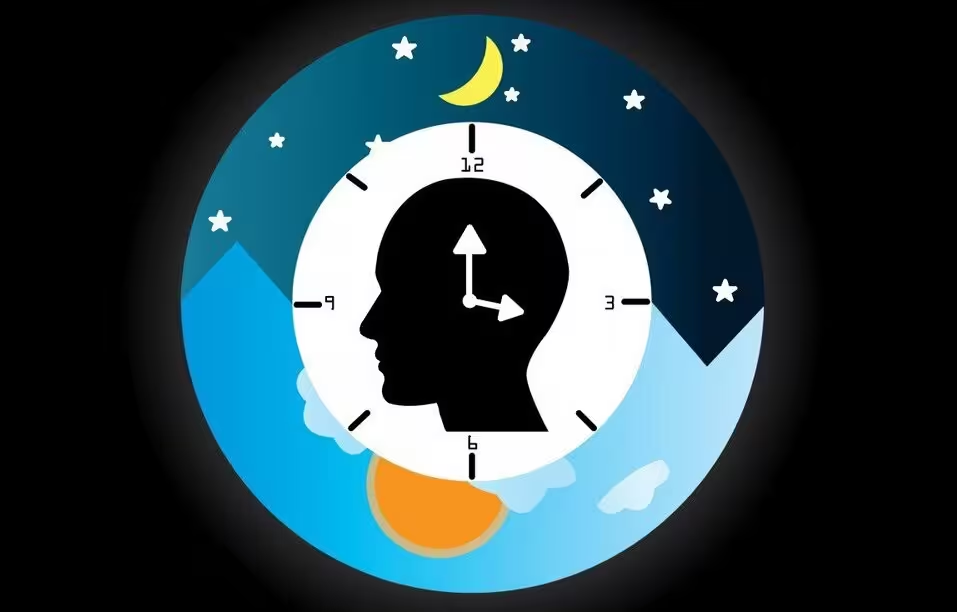Circadian rhythms are natural internal processes that regulate the sleep-wake cycle and repeat approximately every 24 hours. Dependent on environmental cues such as light and darkness, these rhythms play a critical role in a variety of bodily functions, from sleep regulation to hormone secretion.
When these rhythms become out of sync due to factors such as artificial lighting, irregular schedules, or traveling across time zones, people can experience disturbances in sleep, mood, and overall well-being.
Light resets circadian rhythms
A new study suggests that the vibrant blues and oranges we see at sunrise and sunset may be the key to resetting these rhythms. Scientists at the University of Washington in Seattle have developed a new LED lamp that emits alternating blue and orange waves, mimicking these natural light cycles.
An LED device designed to align circadian rhythms has been shown to significantly improve melatonin production, which could be a promising solution for those suffering from sleep disorders and other health issues associated with disrupted circadian rhythms.
Improving circadian health
The study, published in the Journal of Biological Rhythms, is a groundbreaking study on how humans can influence circadian rhythms. The results have significant promise for improving circadian health. Co-author Jay Neitz is a professor of ophthalmology at the University of Virginia School of Medicine.
“Our internal clock tells us how our body should behave at different times of the day, but the clock needs to be set. If our brain is not synchronized with the time of day, it will not function properly,” said Professor Neitz.
Violation of circadian rhythms
The study offers new strategies for dealing with seasonal affective disorder (SAD) and other health problems associated with disruption of circadian rhythms, and offers hope for improving sleep quality, stabilizing mood and overall mental health.
Circadian rhythms are naturally reset each day by the sun’s 24-hour light-dark cycles, and this helps regulate our biological processes according to our environment.
Professor Neitz noted that the light used in the LED device has alternating blue and orange wavelengths that stimulate the circuitry our brain uses to reset its internal clock.
The role of melatonin
Melatonin, the hormone responsible for regulating sleep and the body’s natural sleep-wake cycle, is produced when light signals from the eyes stimulate certain areas of the brain to initiate the process of falling asleep. This hormone plays an important role in the body’s adaptation to darkness, promoting relaxation and restful sleep.
People who spend more time under artificial light, especially in the evening, often experience a delay in melatonin production, which can disrupt sleep patterns and overall well-being. Prolonged exposure to artificial light can also interfere with the body’s ability to properly adjust to natural day-night cycles, contributing to sleep disruption and fatigue.
To address this issue, the research team conducted a study comparing different types of artificial lighting to measure their effects on melatonin production and their effectiveness in resetting circadian rhythms.
A revolutionary approach to lighting
Unlike other commercial products that focus on blue light to trigger melanopsin, this new LED light emits alternating blue and orange waves that stimulate a different circuit in the retina.
“The light we developed does not activate the photopigment melanopsin. It stimulates the blue-yellow opponent circuit that operates via the cone photoreceptors of the retina,” explained Professor Nitz.
In the experiment, participants were exposed to three different lighting devices. Alternating blue-orange light produced the most significant change in melatonin production, increasing melatonin production by 1 hour and 20 minutes, compared to 40 minutes for blue LED and 2.8 minutes for white light.
“Even though our light appears white to the naked eye, we think your brain recognizes the alternating blue and orange waves as the colors of the sky,” Professor Neitz said.
Lighting the way forward
The LED device has now been successfully commercialized through the University of Washington. The product is distributed by Chicago-based TUO. This is a significant step toward making this technology widely available. Using the natural color palette of sunrise and sunset, this innovative lighting solution offers a new approach to resetting circadian rhythms, potentially transforming the way we deal with sleep disorders and regulate our mood and overall health.
The technology promises to improve the well-being of those suffering from today’s lighting and lifestyle challenges by helping people reconnect with the rhythms of the natural world. The study was published in the Journal of Biological Rhythms.
Source: Port Altele
